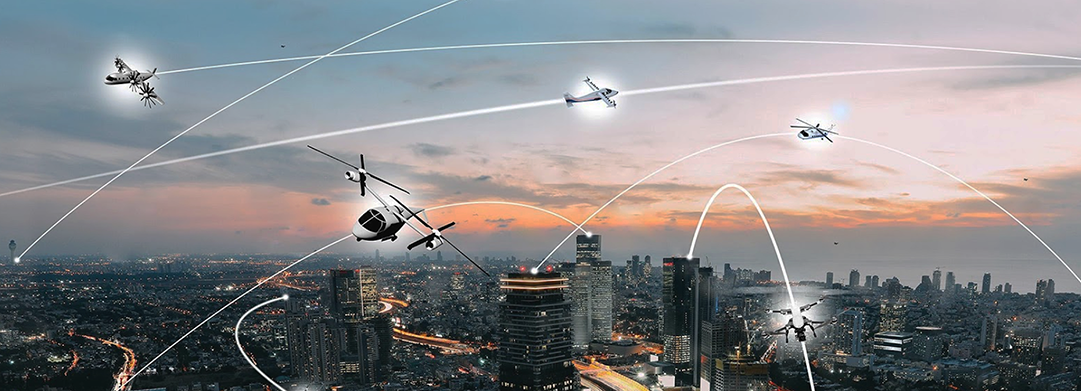Unmanned Aerial Systems (UAS) in the National Airspace (NAS): Public Acceptance and Risk Perception
Abstract
The increasing ubiquity of Unmanned Aerial Systems (UAS) in the national airspace (NAS) has driven a wide variety of research in recent years. Alongside numerous studies to address the technical barriers to implementation of these technologies, social scientists have been drawn in to address the social and cultural dimensions of UAS in the NAS. Drawing upon the research conducted by ARCS fellows Nathan Romine and Jessica Steiner in year one, which explored public acceptance and risk perception of UAS in the NAS broadly, this project will address questions and concerns raised by respondents regarding the need for an equitable rollout of UAS technologies by local law enforcement agencies. The grounded theory approach utilized by Romine and Steiner produced many interesting avenues and hypotheses for future research, but perhaps none as pressing as the need to explore a set of best practices for UAS use by police departments that takes into account the concerns of both community and police stakeholders. Indeed, with increased scrutiny of law enforcement practices in recent years, as well as an urgency to legislate UAS in the NAS at the local, state, and federal levels, this research is both timely and necessary. Preliminary research demonstrates that implementation of these technologies by law enforcement is rarely accomplished without pushback by community stakeholders. Conversely, it can be noted that positive outcomes regarding the use of UAS by police are often overshadowed by these concerns. With this project, we propose to illuminate the concerns and goals of both community and police stakeholders through the use of an applied ethnographic approach. Our methods will include a set of semi-structured interviews that will then be coded and analyzed to determine a set of best practices for implementation of UAS by local police departments.
We are motivated by the increasing ubiquity of Unmanned Aerial vehicles (UAV) on the urban landscape. UAV and their many applications within a shared urban landscape are rapidly outpacing legislation and the public’s ability to make sense of them. The speed with which new uses for UAV are implemented or proposed has generated a great deal of research to address technical barriers to implementation, but far fewer studies to assess the relationship between this technology and humans. As the use of UAS in local law enforcement efforts proliferates (and this use is rarely without controversy and public comment), we are interested in identifying factors that may contribute to public acceptance and risk perception of UAS being used in this capacity. Ultimately, we intend to provide a report with a set of recommended best practices for implementation and use.
Lead Researcher:
- Kevin Zemlicka M.A. : Academic Advisement, Anthropology & Psychology
Collaborators:
- Mark Skoog: NASA Armstrong, The Integrated Systems Research Program, Automatic Systems Project Office Collaborator
Student Team:
- Armenuhi Ghazaryan
- Rachel Rangel
- Nathan Romine
- Jessica Steiner
Funding
- Funding Organization: NASA
- Funding Program: MIRO

Alignment, Engagement and Contributions to the priorities of NASA’s Mission Directorates
Our research will directly contribute to ongoing projects at NASA Armstrong involving the development of a prototype fixed-wing UAV under the direction of Mark Skoog. This UAV is being tested for autonomous decision-making and length of flight capability, each of which is relevant to eventual rollout of UAV for package delivery and urban air mobility. We recognize that these efforts (the Resilient Autonomy Project in particular) at NASA Armstrong may also inform the use of UAS technologies as they are applied to law enforcement efforts.
Research Questions and Research Objectives
Our research relies on an inductive, grounded theory approach. Therefore, our primary intention is to generate hypotheses for future avenues of research related to UAS use by local police agencies. While broadly our goal is to identify factors that may inform public acceptance and risk perception related to UAS use by law enforcement, we do intend to use a grounded theory approach as a tool for fleshing out a preliminary set of recommendations for best practices with regard to implementation. Grounded theory is a methodology designed for generating hypotheses and new social scientific theories, and as such, we see great potential in its application on this project. We see the potential for a grounded theory approach to help in determining an introductory set of practices that may allow for UAS usage by local law enforcement agencies that is at once effective and attentive to fears and concerns of local communities. This research is inductive, yet it is informed by the year one project of Romine and Steiner in which concerns from the public regarding UAS use by law enforcement featured prominently.
Research Methods
For the purposes of this research, we refer to methods as the tools used to acquire data (e.g. semi-structured interview, participant observation, survey, etc.), while methodology refers to the theoretical orientation underpinning our data collection. For example, we will choose to employ a semi-structured interview as our preferred research tool (method) because it allows for a more nuanced response from participants, which in turn meets our ethnographic, methodological goal of capturing the social, cultural, and historical context that we believe is integral to understanding how segments of the American public will perceive risk or come to accept the use of UAS by local law enforcement agencies.
As mentioned previously, this research utilizes a grounded theory approach and is therefore an iterative process. We will be taking extensive field notes at each stage of the research process, from literature review, to our semi-structured interview and eventual coding of those data. These field notes, or “memoing,” inform our development of future avenues of research and theoretical models through which to view our subject.
An outline of our research methods begins with the literature review. Our literature will explore the current state of social scientific research on topics such as the historical context of militarization of police departments in the United States, public perception of UAS use in state-sanctioned arenas for surveillance, reconnaissance, and the application of lethal force, the use of ethnographic/qualitative methods in research concerning humans and socio-technological systems, and social scientific theoretical approaches to understanding community-police relations. The literature review will be our first deliverable to NASA Armstrong, which will include a Power Point presentation and a copy of our document by August 1st.
Next, we will employ two sets of semi-structured interviews. First, we will interview 20 CSUN students about their overall knowledge, perceptions, and thoughts on the use of UAS by law enforcement. The goal is to capture a diverse array of public opinion that can then be coded and analyzed to extract prevailing themes. Next, we will interview an equal number of officers and administrators from the California State University Northridge (CSUN) Police Department (sometimes referred to as Department of Police Services or DPS). DPS officers are fully licensed LAPD officers working out of the CSUN police station headquarters on campus. No stranger to either the implementation of new technologies (recent examples include motorized Segways and advanced facial recognition cameras installed around campus) or robust community engagement efforts, DPS employees are ideal candidates for assessing local law enforcement goals for the use of UAS in policing. When coded and analyzed, these qualitative data will inform our recommendations and final report to NASA Armstrong regarding future avenues of research and best practices for implementation of UAS usage by law enforcement.
Finally, as we are still operating under the limitations of COVID-19 restrictions for human interaction on campus, our interviews will all be conducted using Zoom teleconference technology. Those interviews will be recorded, transcribed, and then analyzed for prevalent themes. A final PowerPoint presentation and written report of our findings will constitute our second deliverable, and will take place in early February 2022.
Research Deliverables and Products
- PowerPoint presentation and copy of the literature review for Mark Skoog at NASA Armstrong
- PowerPoint presentation and copy of the final report based on results of the research, including suggestions for future collaborative projects (research questions and objectives) with ARCS investigators and NASA engineers and set of recommended best practices for UAS usage by local law enforcement agencies
- Publication based on results of research. Possible journals include Human Organization and City and Society. Co-authorship between Mark Skoog and research fellows encouraged.
- I am encouraging Rachel and Armenuhi to each craft separate papers based on our research so that we can submit them for the Southwestern Anthropological Association annual conference in May 2022.
Research Timeline
- January 24th-February 24th: Team development: includes meetings with first year fellows to discuss follow-on research design, establishment of research topic.
- February 25th to March 25th: integration of ARCS associates and volunteers into weekly team meetings to discuss and teach qualitative methods, grounded theory approach, annotated bibliography construction, library research skills, and plan for literature review themes
- March 25th-April 25th: construction of annotated bibliography and compartmentalization of themes in the literature that will inform our work
- April 25th-August 1st: completion of literature review, development of interview protocol, and extension of current IRB finalized
- August 1st- First deliverable to NASA Armstrong will be a ready/completed literature review and discussion of interview protocol
- August 1st-September 15th: Conduct interviews with 30 local law enforcement personnel and complete transcription of those interviews. Upload transcribed interviews into NVIVO
- September 15th – October 31st : Conduct interviews with 30 CSUN students utilizing the SONA system through the Psychology dept. Transcribe these interviews and upload text into NVIVO
- November 1st-February 1st: create codebook, code and analyze all data using grounded theory approach through NVIVO software, write up results.
- February 1st: Final deliverable to NASA Armstrong will be comparative analysis of public and police perception of UAS being employed by local law enforcement agencies with recommendations for best practices and avenues for future research.
- Research Results and Deliverables (Publications, Presentations and other Products), Current/Anticipated for both you and your students
Lead Researcher:
- Kevin Zemlicka M.A. : Academic Advisement, Anthropology & Psychology
Collaborators:
- Mark Skoog: NASA Armstrong, The Integrated Systems Research Program, Automatic Systems Project Office Collaborator
Student Team:
- Armenuhi Ghazaryan
- Rachel Rangel
- Nathan Romine
- Jessica Steiner
Funding
- Funding Organization: NASA
- Funding Program: MIRO
